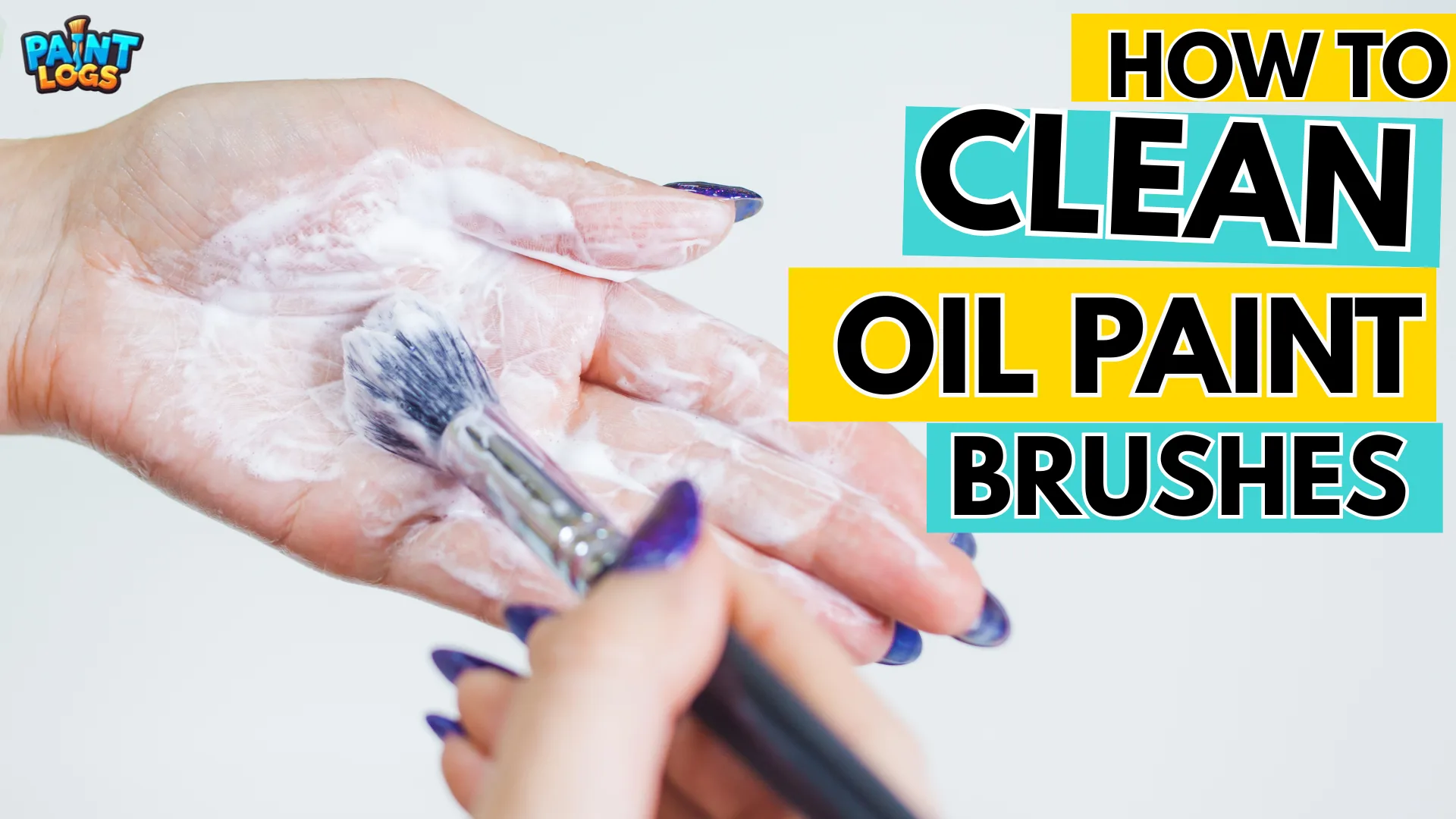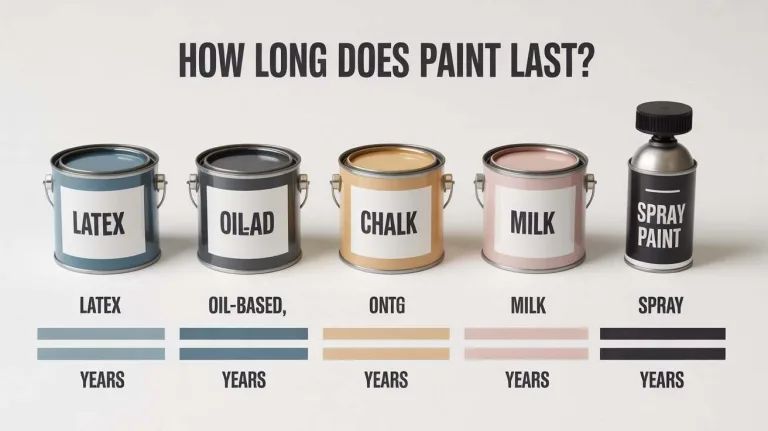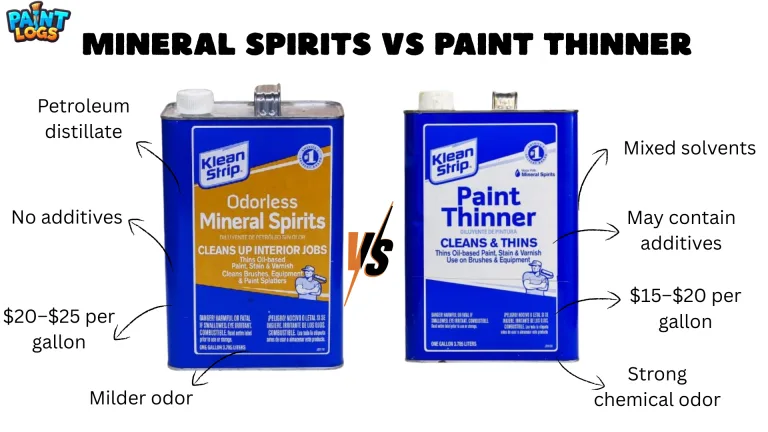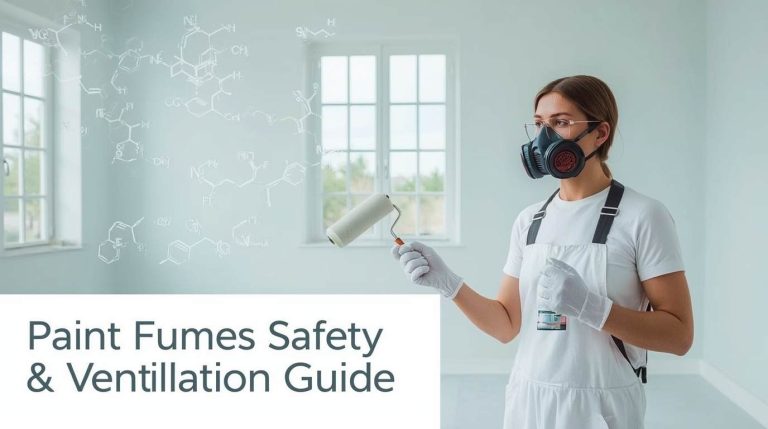Cleaning oil paint brushes doesn’t have to be complicated.
Whether you’re a beginner or experienced artist, learning the best way to clean oil paint brushes will help keep your brushes in top condition and make your painting sessions smoother.
In this guide, we’ll explore 10 easy methods that will help you clean your brushes effectively, from natural options to tried-and-true cleaning techniques.
Let’s dive in and make brush cleaning a quick and simple part of your painting routine.
Related: How to Clean Acrylic Paint Brushes
Why Cleaning Your Oil Paint Brushes Matters
Proper brush care is essential not only for your tools but also for the quality of your art. If you don’t clean your brushes correctly, leftover paint can mix with new pigments, creating unwanted muddy tones.
Additionally, dried paint can harden the bristles, making them less responsive and eventually causing them to break or lose shape.
Regular cleaning ensures your brushes stay in great condition, helping you create smoother, more vibrant strokes while extending the life of your brushes. In the long run, this will make your painting process much more enjoyable and efficient.
The Materials You’ll Need for Cleaning Your Brushes
To clean oil paint brushes, you don’t need much. Most artists use a few basic supplies that can be found easily at home or in art stores. Here’s what you’ll need to get started:
- Solvents: Odorless mineral spirits (like Gamsol), turpentine, or natural alternatives like walnut oil.
- Soaps: Dish soap (like Dawn), brush soap, or Murphy’s Oil Soap.
- Other Tools: Rags, paper towels, a ridged pan or a brush comb to scrape out excess paint, and a container to soak your brushes.
Each of these tools serves a specific purpose in the cleaning process, so understanding when and how to use them can make a huge difference in your results.

Cleaning Brushes Between Colors
Switching between colors without contaminating your work is important for clean, precise strokes. Here’s how to quickly clean your brush:
Start by dipping your brush into linseed oil to thin the paint and remove most of the pigment. This ensures a smooth transition to the next color. Then, swish the brush in warm, soapy water (Dawn dish soap works well) to remove the remaining pigment and oil.
Next, gently rub the brush across a ridged pan or textured surface to lift any residual paint. Afterward, wipe the brush on a rag or paper towel to remove excess moisture. This allows you to keep working without worrying about color contamination.
Cleaning Brushes Without Solvents
If you prefer to avoid using solvents, there are natural methods that are both effective and eco-friendly. Here’s a solvent-free approach:
Use walnut oil or linseed oil to gently rub the paint out of your brush. These oils are gentle on the bristles while effectively breaking down paint. After most of the paint has been removed, wash the brush with warm water and dish soap to get rid of any remaining pigment and oil. This method is ideal for light cleaning between sessions.
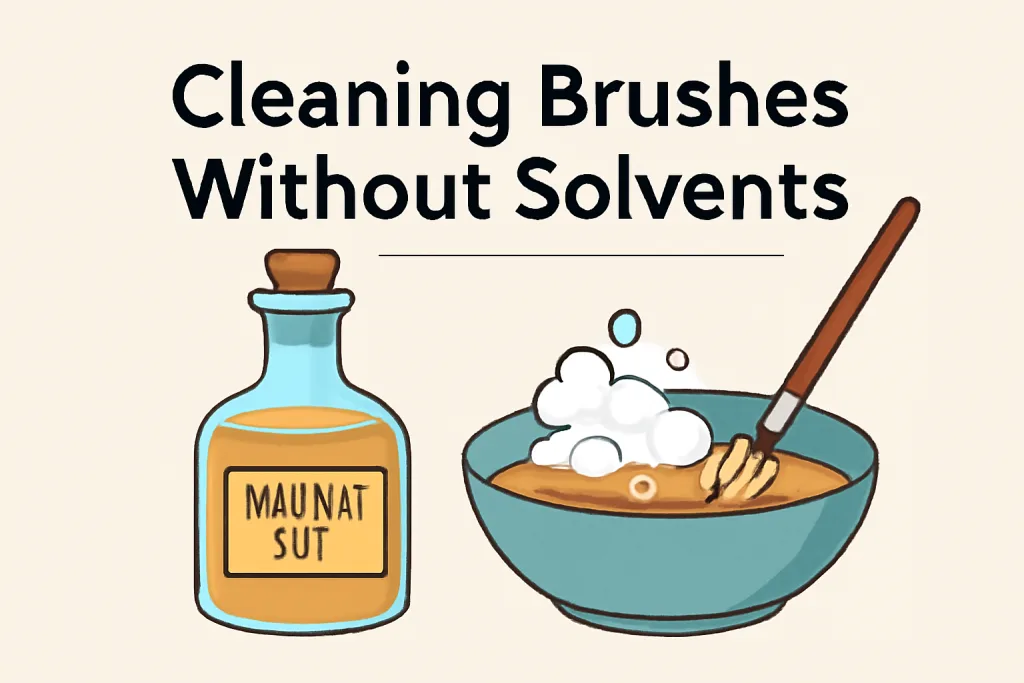
Using Mineral Spirits for Brush Cleaning
Mineral spirits, or odorless mineral spirits (OMS), are commonly used for cleaning oil brushes. Here’s how to use them effectively:
Dip the brush into the mineral spirits and swirl it gently to break down the paint. Once most of the pigment is gone, wipe the brush on a clean rag. Follow up by washing the brush with warm soapy water to remove any remaining solvent. This two-step method ensures thorough cleaning.
Cleaning Brushes at Home: A Simple Approach
If you’re painting at home and want a simple cleaning routine, here’s an easy method:
Start by wiping off excess paint with a rag or paper towel. Then, dip your brush into walnut oil or linseed oil to remove the remaining paint. Afterward, wash the brush with dish soap and warm water to complete the cleaning process. This method is gentle on your brushes and doesn’t require any harsh chemicals.
Cleaning Brushes with Turpentine
Turpentine has been used for years in the oil painting world due to its effectiveness in breaking down paint. If you’re using turpentine, follow these steps:
Dip your brush into the turpentine and gently swirl to break down the paint. Wipe the brush on a rag to remove excess paint, and then wash it with soap and warm water to remove any remaining solvent.
Be sure to use turpentine in a well-ventilated area and take necessary precautions due to its strong fumes.
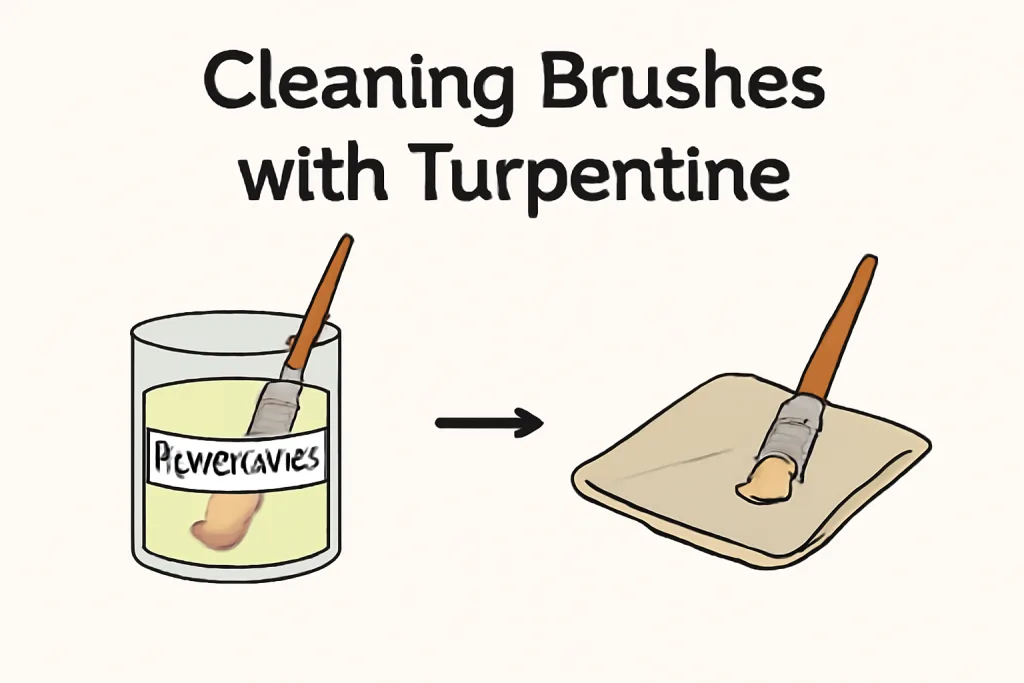
Using Linseed Oil for Cleaning Brushes
For a completely natural method, linseed oil is an excellent solution for cleaning brushes:
Dip the brush into linseed oil and rub it gently on a rag to remove the paint. Once most of the pigment is gone, wash the brush with warm, soapy water to finish the process. Linseed oil also helps condition the bristles, keeping them soft and flexible.
Reddit’s Favorite Brush Cleaning Tips
The Reddit art community offers some great advice for cleaning brushes. Here are a few popular tips:
- Murphy’s Oil Soap is a popular choice for removing stubborn paint from brushes. After soaking brushes in the soap, follow up with Dawn dish soap and warm water to get the brushes fully clean.
- Walnut oil or safflower oil are used by many to keep brushes moist and ready for use without resorting to solvents.
Using Dish Soap to Clean Brushes
Dish soap, particularly Dawn, is a great option for cleaning brushes quickly. Here’s a simple method:
Wipe excess paint from the brush with a rag or paper towel. Then, swish the brush in warm soapy water, scrubbing gently to remove the paint.
After cleaning, rinse the brush with cool water and shake off any excess moisture. This method is ideal for quick, light cleaning.
Using Vinegar to Clean Brushes
If you’re looking for an eco-friendly alternative, vinegar can help clean oil brushes effectively:
Soak the brush in warm vinegar for 10-15 minutes to loosen dried paint. After soaking, scrub the brush in warm, soapy water to remove any remaining paint and vinegar. Let the brush dry horizontally or hang it tip-down to keep the bristles intact.
Natural Brush Cleaning Methods
For artists who prefer to avoid chemicals altogether, walnut oil and safflower oil are great natural alternatives for cleaning brushes. Simply rub the brush in the oil to lift out the paint, then wash with dish soap and warm water to finish the process.
This method is gentle on both your brushes and the environment.
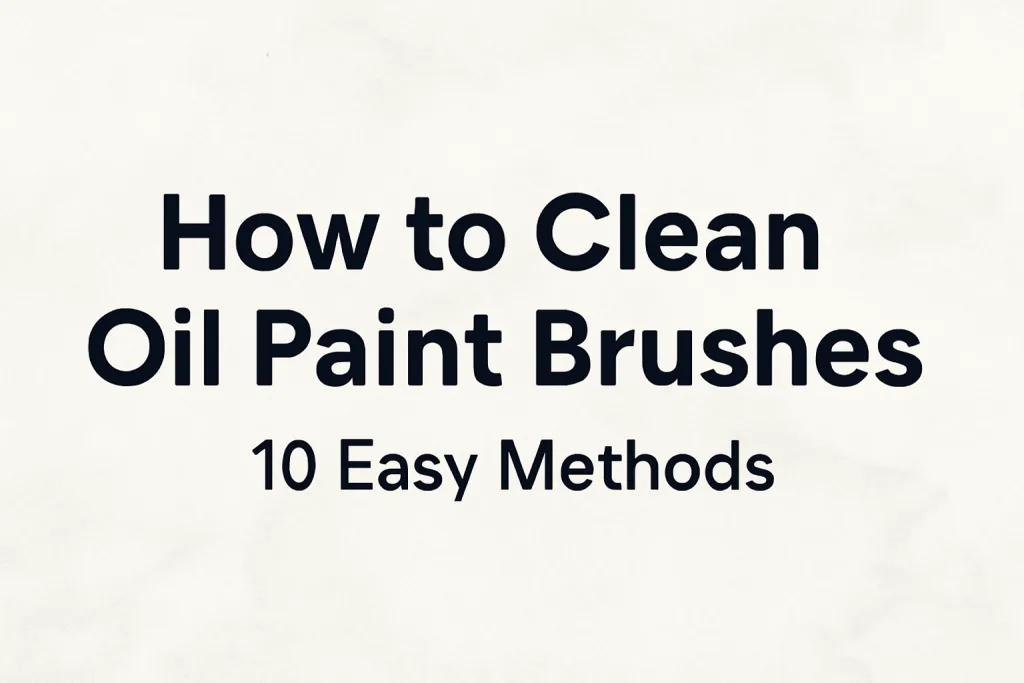
Final Tips for Maintaining Your Brushes
- Use a Brush Holder: Keep your brushes upright by placing them in a container filled with dry rice or beans. This will prevent them from rolling around and getting dirty.
- Avoid Rough Surfaces: When cleaning your brushes, avoid scrubbing them on rough or ridged surfaces as this can damage the bristles over time.
- Store Brushes Properly: After cleaning, always store your brushes horizontally or hanging tip-down to maintain their shape and prevent moisture from getting into the ferrule.
By incorporating these tips and methods into your routine, you can keep your brushes in excellent condition for years to come, ensuring a smoother, more enjoyable painting process.
Conclusion:
Proper brush cleaning is essential for maintaining the quality of your tools and the vibrancy of your artwork. Whether you prefer using solvents, natural oils, or eco-friendly methods, there are multiple ways to clean your oil paint brushes effectively.
By following the right techniques, you can prevent paint buildup, ensure your brushes last longer, and avoid contamination between colors. Taking care of your brushes will also make your painting experience smoother and more enjoyable, allowing you to focus on your creativity rather than on the hassle of cleaning.
Remember, consistency is key. Regular cleaning, using the right tools, and taking proper care of your brushes will go a long way in maintaining their performance and your artistic flow.
FAQs
How often should I clean my oil paint brushes?
It’s important to clean your brushes after every painting session to prevent paint from drying on the bristles. For mid-session cleanings, you can wipe off excess paint or dip the brush in oil before washing it thoroughly at the end of the day.
Can I use water to clean oil paint brushes?
Water alone will not effectively clean oil paints, as oil and water don’t mix. It’s best to use solvents (like mineral spirits or turpentine) or natural oils (like linseed oil) to break down the paint, followed by a wash with soap and warm water to remove any remaining residue.
Is it safe to use odorless mineral spirits indoors?
Odorless mineral spirits are less toxic and have a lower odor than traditional turpentine, but they still require proper ventilation. It’s advisable to use them in a well-ventilated space or outside if possible. Always follow safety instructions on the label.
Can I clean my oil paint brushes with dish soap?
Yes, dish soap like Dawn is an effective and affordable option for cleaning oil paint brushes. After removing excess paint, wash your brush with warm soapy water to break down any remaining oils and pigments. Rinse thoroughly and reshape the bristles before drying.
How do I remove dried paint from brushes?
To remove dried paint, soak the brushes in a mixture of warm vinegar or Murphy’s Oil Soap for a few hours. After soaking, wash the brush with soap and water. If necessary, repeat the process until the brush is clean.
What is the best way to store cleaned brushes?
After cleaning, store your brushes horizontally or hang them tip-down to preserve their shape. Avoid storing brushes upright with bristles facing up, as this can cause water to seep into the ferrule and damage the brush over time.
Is linseed oil a good option for cleaning brushes?
Yes, linseed oil is an excellent natural option for cleaning brushes. It helps break down oil paint without damaging the bristles, and it can also condition the brush, keeping it soft and flexible for future use.
How can I clean brushes between different colors without mixing pigments?
To clean your brush between colors, wipe off excess paint using a rag, then dip it into linseed oil to remove more paint. Swish it in warm soapy water to remove the oil, then wipe it dry on a clean rag. This method ensures no contamination between colors.

